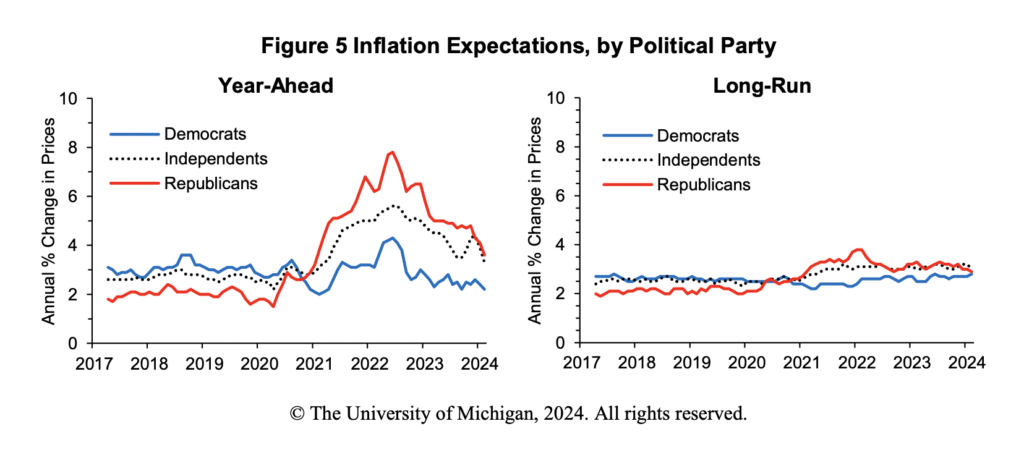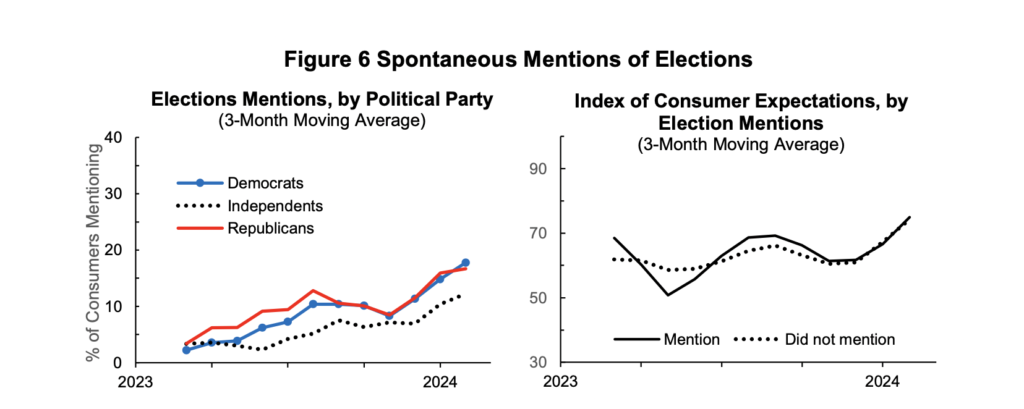In early 2022, Richard Curtin, then director of the UMich confidence survey, wrote that partisan views are now, “unfortunately,” completely dominating “rational assessments of ongoing economic trends,” which is encouraging “poor decisions by consumers and policy makers alike.”
Two years later, Joanne Hsu, who now directs the survey, took on how those views have changed during the inflationary period that followed the pandemic. She notes that Independents are toeing the line, their sentiment tracing the same line as overall sentiment, and although Democratic and Republican views are at very different levels, they move together too. All hit a trough in June 2022, and all have “surged” since November 2023, as we noted recently.
The gap increased “substantially” during the Trump administration, followed by a “slight narrowing” during Biden’s. Gaps by income have narrowed, which Hsu suggests reflects gains among lower-income workers in a tight labor market.
Overall, the “news heard” partisan gap tightened during the current administration, but widened considerably for news heard specifically on inflation. During both 2021 and 2022 everyone heard negative news, with news reaching Republicans, apparently, “notably worse,” than that reaching Democrats. Over the last year net favorable news improved “substantially” among Democrats, and only “gradually” for Republicans.
Concerning both short- and long-term inflation expectations, Independents’ run closer to those of the party not in power, an unusual divergence from the average. You can see from the graph above we snapped that short-run inflation expectations really bounced among Republicans, whereas those among Democrats were more stable or, as Hsu puts it, Republicans’ expectations for the year were “much less sensitive … to trends in realized inflation” than were those of Democrats.
As you might guess, impromptu mentions of the importance of the upcoming election on economic outcomes is growing, rising from 1.3% last January, to 17% this January. Uncertainty gets a lot of ink but, as you can see in this graph, apparently those does nothing to outlooks: those who mention and those who don’t have never been so aligned. Hsu thinks this may change as the election gets closer—hang onto your hats.
Thanks to the team at UMich for permission to use graphs.





